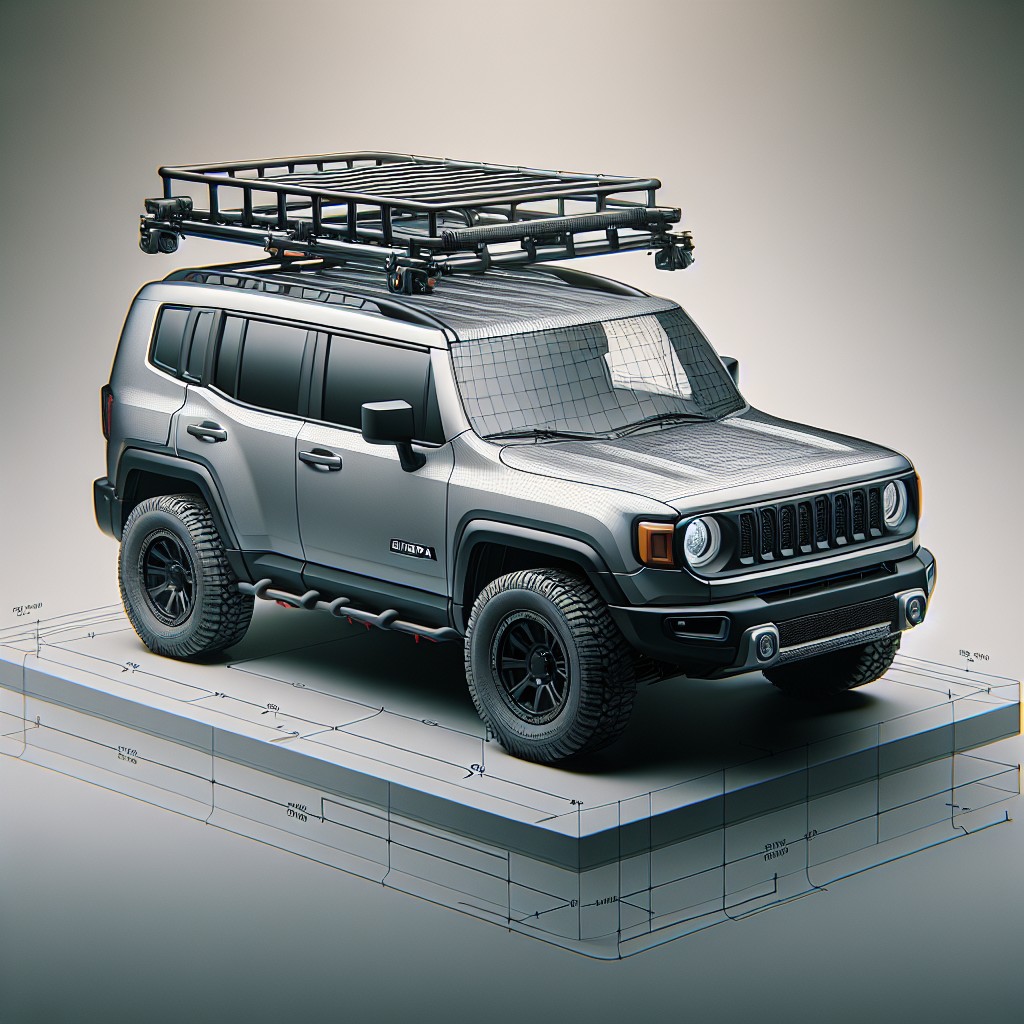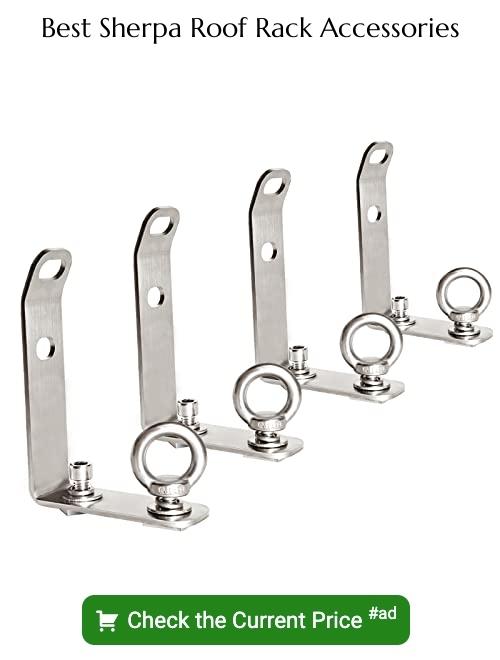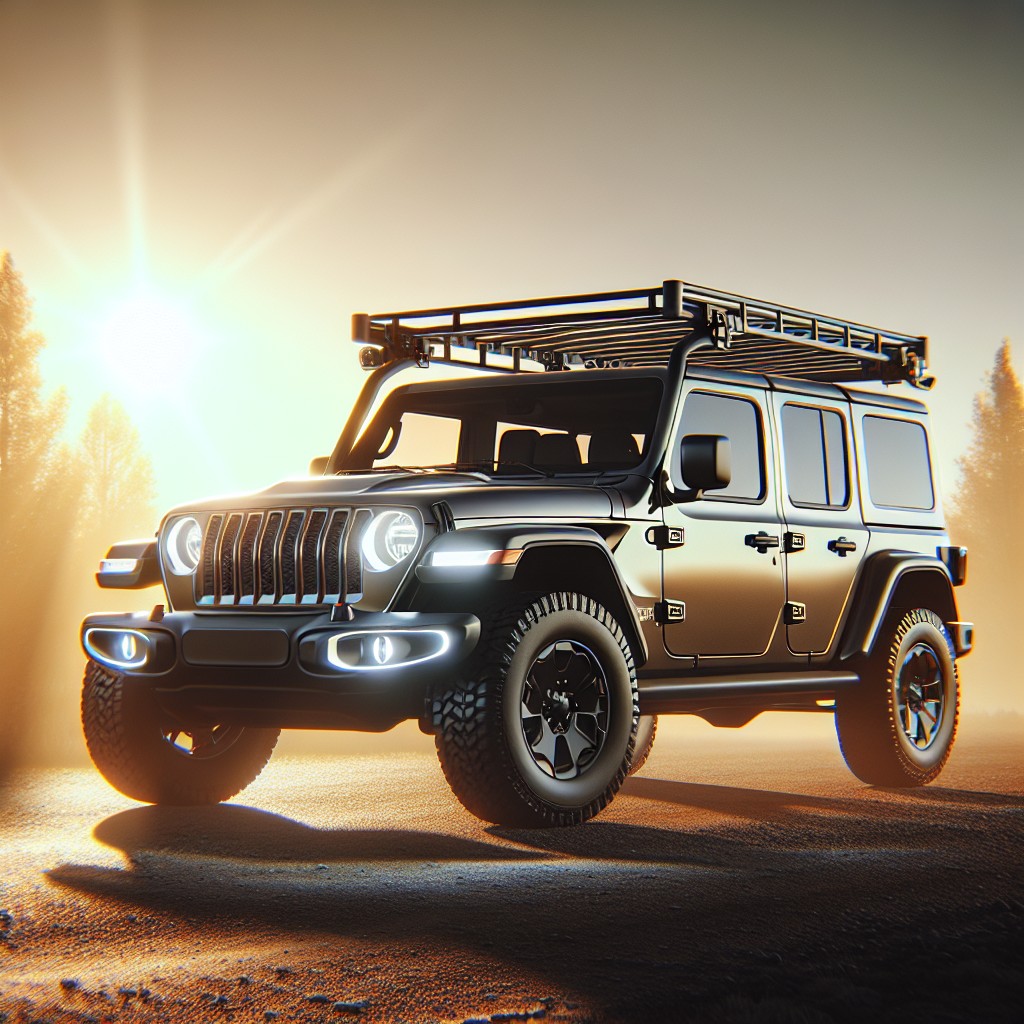Last updated on
Discover the superior functionality of Sherpa roof racks because their versatile design and rugged construction set them apart in the market.
Key takeaways:
- Sherpa roof racks are versatile and rugged, designed for adventurers.
- Made of lightweight, corrosion-resistant aluminum with a sleek design.
- Compatible with various vehicle models and easy to install at home.
- Sherpa roof racks have a high loading capacity and durable construction.
- Customer reviews highlight ease of installation and excellent customer service.
Sherpa Roof Rack Overview

Sherpa roof racks are crafted for adventurers seeking a durable solution to transport equipment on their vehicles. Designed with aerodynamics in mind, they reduce drag and noise, which can be a common issue with other racks.
The use of lightweight, high-strength aluminum not only supports heavy loads but also resists corrosion, ensuring longevity and performance in diverse weather conditions. Furthermore, the sleek construction integrates seamlessly with a variety of car models, enhancing the vehicle’s aesthetic while providing a practical storage addition for gear like kayaks, bikes, and cargo boxes.
Sherpa Roof Rack Design and Materials

Engineered for resilience, Sherpa roof racks boast a sleek yet sturdy aluminum construction, lending them a lightweight profile without compromising on strength. The aluminum is often aerospace-grade, selected for its resistance to corrosion and environmental wear, ensuring longevity and consistent performance under various weather conditions.
Utilizing a powder-coated finish, these racks resist scratches and fading, maintaining their aesthetic appeal over time. This durable coating acts as an additional layer of protection against the elements, from harsh UV rays to salt spray.
Aerodynamics is a key factor in the design. With a streamlined shape, Sherpa racks minimize wind resistance, which can enhance fuel efficiency and reduce wind noise – a common annoyance with roof-mounted systems.
The integration of modular components allows for customizable setups, accommodating a variety of accessories such as bike mounts, kayak holders, and cargo boxes. This adaptability makes it simple for users to tailor their rack system to their specific adventure needs.
By focusing on material quality and thoughtful design, Sherpa roof racks provide a blend of functionality and style that meets the demands of avid adventurers and casual travelers alike.
Compatibility With Various Vehicle Models
Sherpa roof racks are engineered to accommodate a wide array of vehicles, including SUVs, crossovers, sedans, and off-road vehicles. The adaptability to different roof types, such as bare roofs, factory side rails, and fixed points, allows for a seamless integration with your car’s existing design.
To ensure a perfect fit, manufacturers often provide a variety of mounting kits and foot packs. When selecting a Sherpa roof rack, measuring the width and length of your vehicle’s roof, taking into account any factory-installed features, is crucial for compatibility. Compatibility charts are also available and should be consulted to match your vehicle make, model, and year with the appropriate Sherpa rack model.
It’s essential to verify load weight limits for your specific vehicle to prevent any potential damage or safety issues.
Installation Process
Installing a Sherpa roof rack is typically a straightforward procedure that can be done at home with basic tools. Most Sherpa racks come with all necessary mounting hardware and a detailed instruction manual. Here’s a quick rundown of the steps involved:
1. Identify Fix Points: Locate the designated mounting points on your vehicle’s roof. These are usually factory-installed and can be found outlined in your vehicle’s manual.
2. Assemble the Rack: Using the provided components, assemble the roof rack frame on the ground. Ensure all bolts are tightened but leave enough play to adjust once it’s on the roof.
3. Position the Rack: Carefully lift the assembled frame onto your vehicle’s roof, positioning it over the fix points.
4. Secure the Rack: Attach and tighten the mounting brackets to the vehicle’s fix points. This step often requires a torque wrench to ensure the bolts are properly tightened, according to the instructions.
5. Adjust Placement: Once secured, make any necessary adjustments to ensure the rack is centered and stable.
6. Final Check: Double-check all connections and give the rack a gentle shake to test its security before loading it with gear.
Be mindful to respect the vehicle manufacturer’s recommended weight limit when using the rack. It’s also advised to periodically check the rack for stability and tighten the connections if necessary, especially before long trips.
Loading Capacity and Durability
Sherpa roof racks are engineered to support a substantial load without compromising the integrity of your vehicle. The loading capacity typically ranges up to 300 pounds, allowing for the secure transport of gear and equipment.
This weight limit ensures that you can carry items like kayaks, bicycles, or camping supplies with ease. It’s crucial, however, to always refer to your vehicle’s maximum roof load rating before loading, as this can vary between models and manufacturers.
The racks’ durability stems from high-quality aluminum construction, renowned for its strength-to-weight ratio. Aluminum is not only sturdy but also resistant to rust, ensuring longevity even under harsh weather conditions.
The aerodynamic design further enhances the rack’s resilience by reducing drag and ensuring stability even at highway speeds. Regular maintenance, such as checking for and tightening any loosened bolts, will help maintain its robust performance over time.
Sherpa Roof Rack Safety Tips
Always consult the vehicle’s owner’s manual to determine the maximum allowable roof load and adhere to this limit when loading your Sherpa Roof Rack.
Properly secure all items on the rack using appropriate tie-downs and cargo nets to prevent movement or loss during transit.
Regularly inspect the rack for signs of wear or damage, especially before embarking on long trips, and tighten any loose components.
Ensure that the load is evenly distributed across the rack to maintain balance and avoid putting undue stress on one side of the vehicle.
When loading and unloading cargo, be mindful of overhead obstacles, such as garage entries or low-hanging branches, to avoid accidents or damage.
For items that protrude beyond the length or width of the vehicle, use flags or reflective materials to increase visibility for other drivers.
Be aware that a loaded roof rack can alter the vehicle’s center of gravity and handling; drive cautiously, especially around corners and in high winds.
Periodically check cargo during stops to ensure everything remains secure and properly positioned.
By following these safety tips, you can help ensure a safe journey with your Sherpa Roof Rack, keeping both your cargo and your fellow road users protected.
Sherpa Rack Versatility for Outdoor Activities
Sherpa roof racks provide a dependable platform for transporting outdoor gear. Whether you’re embarking on a cycling trip, heading to the slopes, or setting out for a weekend of camping, these racks accommodate various accessories, including bike mounts, ski carriers, and kayak saddles.
Their robust construction ensures that even heavy items such as roof tents can be carried with confidence. The aerodynamic design minimizes wind resistance, making them suitable for long-distance travel without significantly impacting fuel efficiency.
Accessories like high-lift jack mounts, shovels, and auxiliary lighting can be easily integrated, offering off-road enthusiasts the convenience they need to be fully equipped for any adventure.
Sherpa Roof Rack Warranty Information
Understanding the warranty for your Sherpa roof rack is crucial for maintaining peace of mind on your journeys. The manufacturer typically offers a limited lifetime warranty, which generally covers defects in materials and workmanship.
It’s important to register your product upon purchase to activate the warranty. Be aware that the warranty does not cover damage caused by accidents, improper use, or normal wear and tear.
Keep documentation of your purchase and any warranty claims, as these will be required for service. For specific warranty conditions and the claim process, always refer to the documentation supplied with your Sherpa roof rack or consult the manufacturer’s website.
Remember, adhering to recommended loading capacities and usage guidelines will help ensure your roof rack remains covered under warranty.
Customer Reviews and Testimonials
Feedback from individuals who have purchased a Sherpa roof rack often highlight its ease of installation and impressive build quality.
Many users report satisfaction with the rack’s robustness and how it accommodates a range of gear, from camping supplies to sports equipment.
Testimonials frequently mention the low noise level while driving, a testament to the rack’s aerodynamic design.
A common thread in reviews is the customer service experience.
Buyers appreciate the responsive support team that assists with inquiries and installation concerns.
Nevertheless, it’s worth noting that some users have pointed out limitations regarding compatibility with certain accessories, advising prospective buyers to check their specific needs against the product’s specifications.
Overall, the consensus among users is that a Sherpa roof rack provides a reliable and functional solution for extra storage on road trips, with a sleek look that doesn’t compromise the vehicle’s appearance.
Use of the ‘Fit My Vehicle’ Tool
Selecting the appropriate roof rack for your vehicle is simplified with the ‘Fit My Vehicle’ tool. This user-friendly feature minimizes the guessing game:
- Navigate to the manufacturer’s website and locate the ‘Fit My Vehicle’ tool.
- Input your vehicle’s make, model, year, and body type.
- The tool then filters out incompatible options, presenting only suitable rack systems.
- Consider roof type (bare, fixed points, side rails, etc.) and load requirements for an optimal match.
In essence, this tool streamlines the selection process, ensuring compatibility and customer satisfaction.
FAQ
Why is Rhino Rack so expensive?
Rhino Racks are expensive due to their high-quality materials, sturdy design, and advanced engineering which enable them to carry heavy loads while resisting wind and high speeds.
Who makes best roof racks?
The best roof racks in 2024 are the Yakima High Road, Leader Accessories Kayak Rack, Yakima Fresh Tracks, Arksen Universal Roof Rack, and Thule UpRide.
What are the disadvantages of a roof rack?
Roof racks, despite their utility, can introduce adverse effects such as increased aerodynamic drag leading to higher fuel consumption, and require correct fitting and maintenance.
How does a sherpa roof rack enhance the vehicle’s functionality?
A sherpa roof rack enhances a vehicle’s functionality by providing extra storage space for bulky items and equipment, thereby freeing up space inside the vehicle for passengers.
What factors should be considered when installing a sherpa roof rack?
When installing a Sherpa roof rack, one should consider factors such as vehicle capacity, rack weight, intended load, correct fittings and fixtures, and potential impacts on vehicle handling and fuel consumption.
Can a sherpa roof rack affect the vehicle’s fuel efficiency?
Yes, a sherpa roof rack can affect a vehicle’s fuel efficiency as it increases wind resistance, thereby forcing the engine to work harder.





